
The past several years of Galaxy Watch releases have shown that Samsung is committed to making detailed refinements to its wearable lineup. This year brings some of those small changes, but it retells the same story – minor features get even better, but the Galaxy Watch 6 brings no big changes.
Hardware
Same story, but it’s a good one
At first glance, the Galaxy Watch 6 looks indistinguishable from its predecessors in almost every way imaginable. The body takes on the same design recipe and adds very little to change it. Rotating the device doesn’t make it easier, with the sensor array and silhouette of the Watch 6 offering nothing majorly different than the Watch 5.
That isn’t to say it doesn’t look good. In fact, Samsung hit such a sweet spot with the Galaxy Watch design in recent years that changing it likely wouldn’t prove beneficial. I’ve had the 44mm Graphite edition attached to me at all times and the flowing lines of the dark gray body and clever fang-like lug placement where the band sits offer such a good look on the wrist – better than most Wear OS watches on the market.
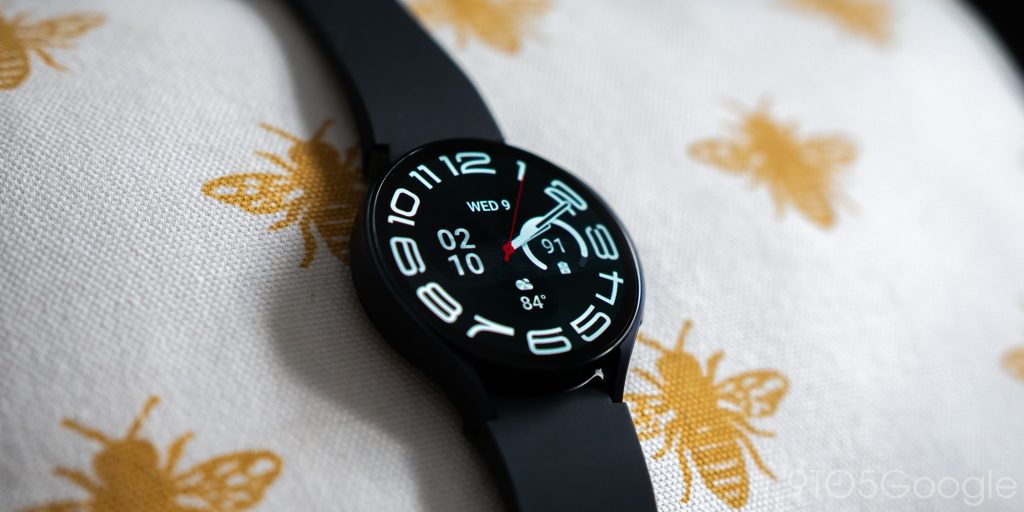
Samsung kept the color variants to a minimum this year, with Graphite, Silver, and the only options on the Watch 6. Gold is limited to 40mm while Silver is solely available on 44mm. I’ve never been a fan of light-colored watches, but I wouldn’t mind being paired with either other colorways.
The build material remains the same, as well. Armor Aluminum protects the core and internals of the device, which means it’s not as easy to scratch but is still susceptible to persistent digs in the metal. This go around, my Galaxy Watch didn’t make hard contact with a car but I could confidently say this build is just as tough.
A better display is everything
One of the biggest refinements present on the Galaxy Watch 6 is the improved display. Still packed under a sapphire crystal panel, the Super AMOLED display reads at a resolution of 480 x 480 – improved over the 450 x 450 on the Galaxy Watch 5. On paper, it’s a nice stat and backs up the idea that the Watch 6 is a mere step up. On wrist, it’s a slightly different story.
The Watch 6 display is very clearly an improvement over the previous version. Small details are much more easily perceptible. That’s a key takeaway because a lot of script on wearables is small. Wear OS often packs in information – less so in One UI 5 Watch – that can be hard to read on a small display. With a pixel density of about 453ppi, small type is much more clear and makes a real difference throughout the day.

This win-win from Samsung offers a secondary benefit – bezel reduction. The overall size of the Watch 6 really didn’t change over the past year. The main difference-maker is the reduced bezels, which Samsung claims offer a display increase of about 20%. The difference feels huge if you’re coming from the Watch 5; even the Pro edition feels tiny by comparison.
Major tweaking was also done to the brightness capabilities of the Super AMOLED panel. The display gives off a clearer and brighter picture that’s easily visible wherever I had to check my watch. Dark areas initiated the watch’s lower brightness setting, which was dark enough to not disturb others while maintaining a perfectly visible image when I lifted my wrist. Bright sun had nothing on the Watch 6, either, as the improved 2,000 nits max brightness was good enough to give me a clear read in direct light.
Coming back to the sapphire crystal element, it’s encouraging to see Samsung stick with the screen solution. It’s not cheap, nor is it easy to produce. However, the effort results in a very durable panel that resist scratches much better than Gorilla Glass can. Sapphire, by nature, is not shatter-resistant, but how often do we drop our watches? Sapphire is such a good choice for screen protection and I’m glad to see it’s made a return this year.
Software & Performance
One UI 5 does some reasonably heavy lifting
A lot of the appeal of the Watch 6 is beyond the physical and really comes with the software. One UI 5 Watch brings some really nice changes to the series and cleans up a lot of what was wrong with One UI 4.5 – the debut software of last year’s Galaxy Watch.
Notifications are the biggest change, in my opinion. What used to be cramped notifications with lots of unorganized information are now nice bubbles with bigger and clearer text. Images in notifications appear cleanly and are easy to check at quick glance.
Wear OS 4 also brings quick transfers for easy device switching. One of the most contentious design elements of Wear OS 3 was the inability to switch devices without a full factory reset. That’s changed now and you can switch phones through a relatively painless process. One UI 5 brings automatic backups along with that improvement.
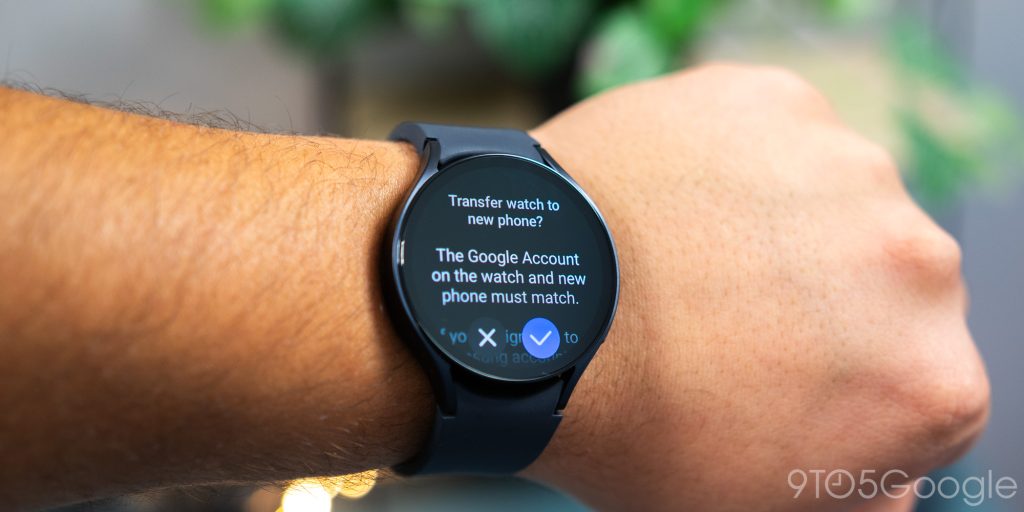
Overall performance is steady. I wasn’t blown away and often found bits of lag here and there while browsing the UI. Besides those quick moments, the experience as a whole has been positive. The Watch 6’s Exynos W930 chip isn’t a massive improvement over the prior year’s W920, but it’s a change nonetheless and it hasn’t affected the series negatively.
A health suite that exudes quality
Health features on the Galaxy Watch 6 take a huge jump with One UI 5. Expanded functions include sleep tracking, certain cardio exercises, and menstrual cycle tracking using the previously mysteriously shrouded temperature sensor within the BioActive sensor array.
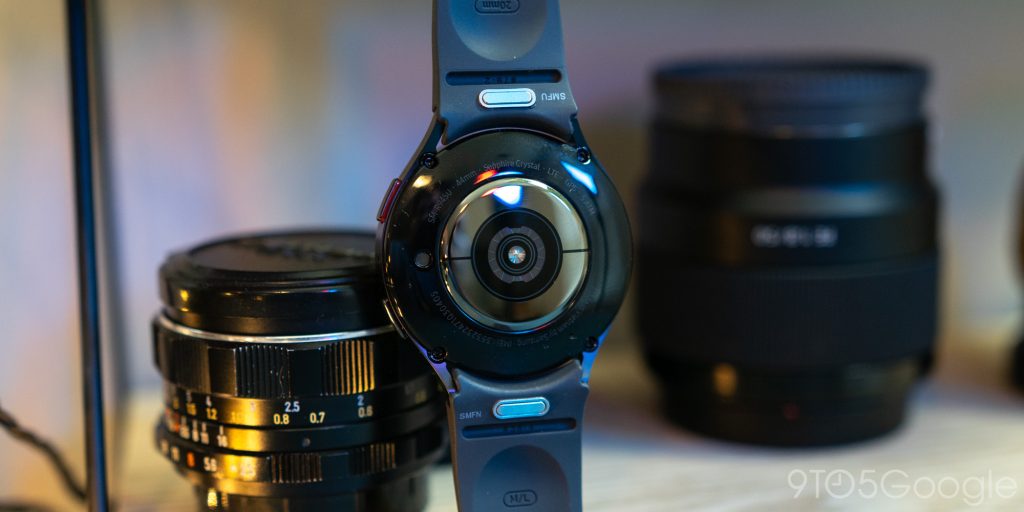
Sleep tracking and coaching has been a great experience on the Galaxy Watch 6. As one who has shied away from sleep tracking in the past simply because of inconvenience, there were reasons to give it a proper shot on Samsung’s newest wearable. Sleep tracking brings forward data like your sleep time, sleep cycles, blood oxygen levels, and more to compile a sleep score. That score is used to quantify the quality of your night’s rest.
The tracking aspect is intricate and offers a lot of small details about what’s actually going on at night. For instance, I enabled snore tracking – to my disgust – and was surprised to find that I’m better off than previously thought. On top of that, I’m given a visual graph of my changing blood oxygen levels, as well as a breakdown of what that actually means for my health.
After a full week of logging rest at night, the Galaxy Watch 6 is able to start the coaching portion of sleep tracking. That includes giving users a sleep animal to represent the type of sleep they’re getting each night. I’m a lion, which essentially means I’m out for the count at night.


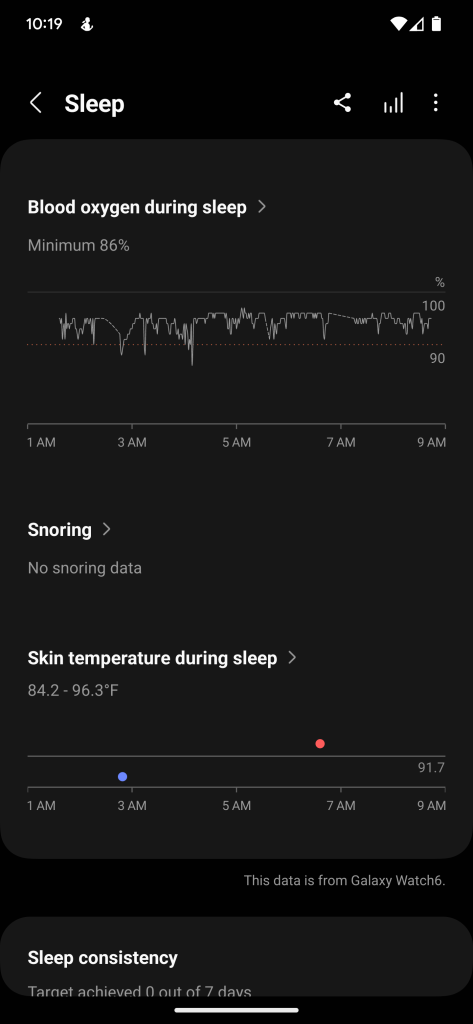
Beyond the cute animal animations, sleep coaching does provide actual coaching, to an extent. For instance, you’re given a task list each day that can be accessed through the Samsung Health app on any device paired to the watch, or through the Watch 6 itself with its new sleep-coaching watch face that I’ve come to love. Some of the suggested actions include:
- Eat breakfast
- Avoid naps
- Avoid caffeine after 5:30 p.m.
- Avoid alcohol before bed
- Avoid eating before bed

Some of these seem dead simple and obvious, but we sometimes forget. A reminder is nice.
Beyond rest, the Galaxy Watch 6 pads out cardio exercises to give better insights for heavier workouts. Starting any type of running exercise now initiates what Samsung is calling “heart rate zones.” These zones are personalized, based on your capabilities as the wearer.

As you go through your exercise and its ups and downs, your active zone will change. This is meant to give insights as to what you should be aiming for to qualify your run as a quality one.
Once the run is finished, you’ll get a breakdown of what zones you hit and how much time you spent at each.
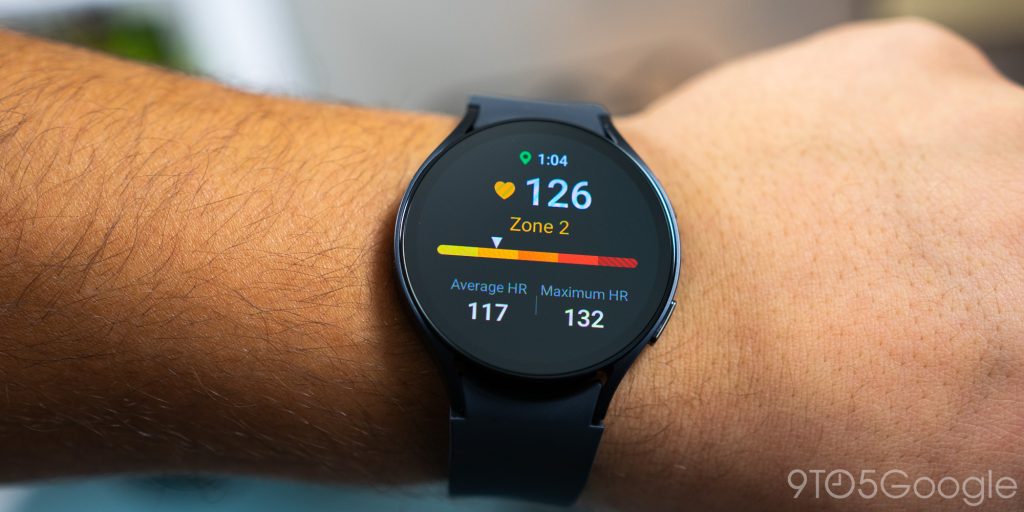
The entire health suite has seen an overhaul with this version of One UI. It’s really getting closer to something like what Fitbit offers. If more improvements were made, I’d consider paying if Samsung starts charging for a fuller edition of the Samsung Health app, as Fitbit does with the Pixel Watch and certain features. Hopefully, it never comes to that, but the point remains that Samsung is making some big changes to its health-tracking capabilities, and we’re here for it.
A new OS is hardly a purchase point
The software element of the Galaxy Watch 6 is a tricky subject. The entire functionality expansion brought on by One UI 5 and the idea that the Watch 6 series is superior because of it is a moot point. Samsung confirmed that both the Galaxy Watch 5 and Watch 4 series will get the new OS, along with the upgrades mentioned. The only change is the inability to read body temperature on the Watch 4.
Both the Galaxy Watch 4 and Galaxy Watch 5 are eligible for a beta version of the OS, though it’ll still be some time before it’s released in full on those devices. The Watch 6 and Watch 6 Classic both get Wear OS 4 in full from the get-go.
Battery life
Even longer days and nights
This is another area where refinement is the biggest buzzword. The Galaxy Watch 5 of last year was an improvement over its own predecessor, however, it still wasn’t fantastic. The Watch 6, on the other wrist, is getting much closer to “fantastic,” and dare I say, “enough?”
Where the Watch 5 could last around a day and a night before needed a boost, the Galaxy Watch 6 is spoiling me with a full day and night with battery to spare me another 12 or more hours. Mind you, this is the 44mm Galaxy Watch 6 with a 435mAh. Samsung estimates around 30 hours with always-on display enabled.
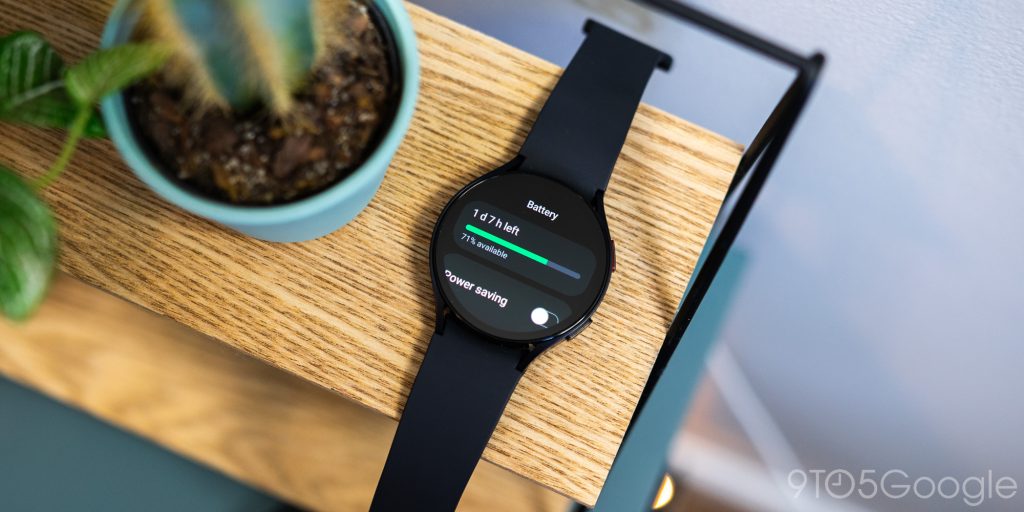
Remember, one night’s worth of battery life is indicative of AOD being off with Bedtime Mode. In reality, that means you should expect more than 30 hours if you’re wearing it at night. Maybe 35 would be a better estimate. Let’s say I took the Watch 6 off the charge at 8 a.m., then I’d see a living battery up until 7 p.m. the next day. That’s very close to my actual experience.
I think this is the sweet spot I’ve been waiting for. It’s enough battery for me to regularly slap the Watch 6 on the charger every morning after wearing it to bed, but if I miss the charger and need to run out of the house, I don’t need to worry in the least.
It’s worth noting that the 40mm edition carries a 350mAh cell, but Samsung estimates the same amount of battery life. We haven’t had a chance to test this.
Still fast, maybe even faster
From what we can surmise, the Galaxy Watch 6 uses the same 10W USB-C puck that the previous version came with. That means it’s still a fast-charging watch, but the Watch 6 might handle it better.
I could get about 50% within 40 minutes or so, though it took about an hour or a little more to fully top up to 100%. This is totally reasonable and means I can get eight hours of use within 10 minutes of charging. While it’s not a huge improvement, it’s still good to see in a generation gain.
Final thoughts
A refinement worth upgrading to?
It seems we repeat this narrative every year. “Should you upgrade to the [insert watch name here]?” Well, that just might be an intentional genius from Samsung.
See, from a Watch 5 to a Watch 6, there’s not much need to upgrade. It has a better battery and better display, but that’s where the differences fade. Now, if you were to upgrade from a Watch 4, that’s an entirely different story. The display gap is even bigger and the battery is immensely better. With that, you’re getting expanded temperature tracking for certain health concerns, and you’re getting access to upcoming versions of One UI down the line.
Related: Galaxy Watch 6 Classic vs Galaxy Watch 5 Pro: What’s changed, and why it’s not a replacement
By creating these minimal refinements every year, you no longer need people to justify year-over-year upgrades, rather, easier to justify multi-generational skips. With that, Samsung doesn’t need to break their necks creating massive advancements, they can focus on making things better one step at a time.

The Galaxy Watch 6 comes in at $299 for the 40mm and $329 for the 44mm. At that price, you’re buying into a really good watch that shines with well-thought details and features that have come from multiple renditions of devices. Performance is great and battery life is even better.
If I were upgrading from a Watch 5, I’d save my money. However, anyone else would likely benefit from what the Watch 6 has to offer. I’ve vastly enjoyed my time with the device because it feels more finished than I’ve experienced before with a Galaxy Watch. It reflects the price it comes in at and offers a fine experience for any Android user.
Buy the Galaxy Watch 6
FTC: We use income earning auto affiliate links. More.


Comments